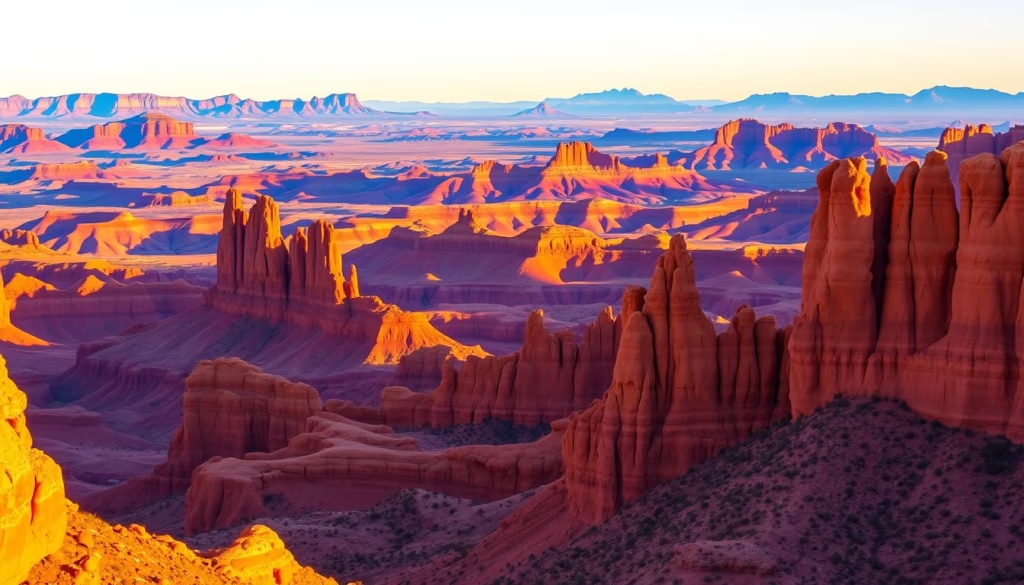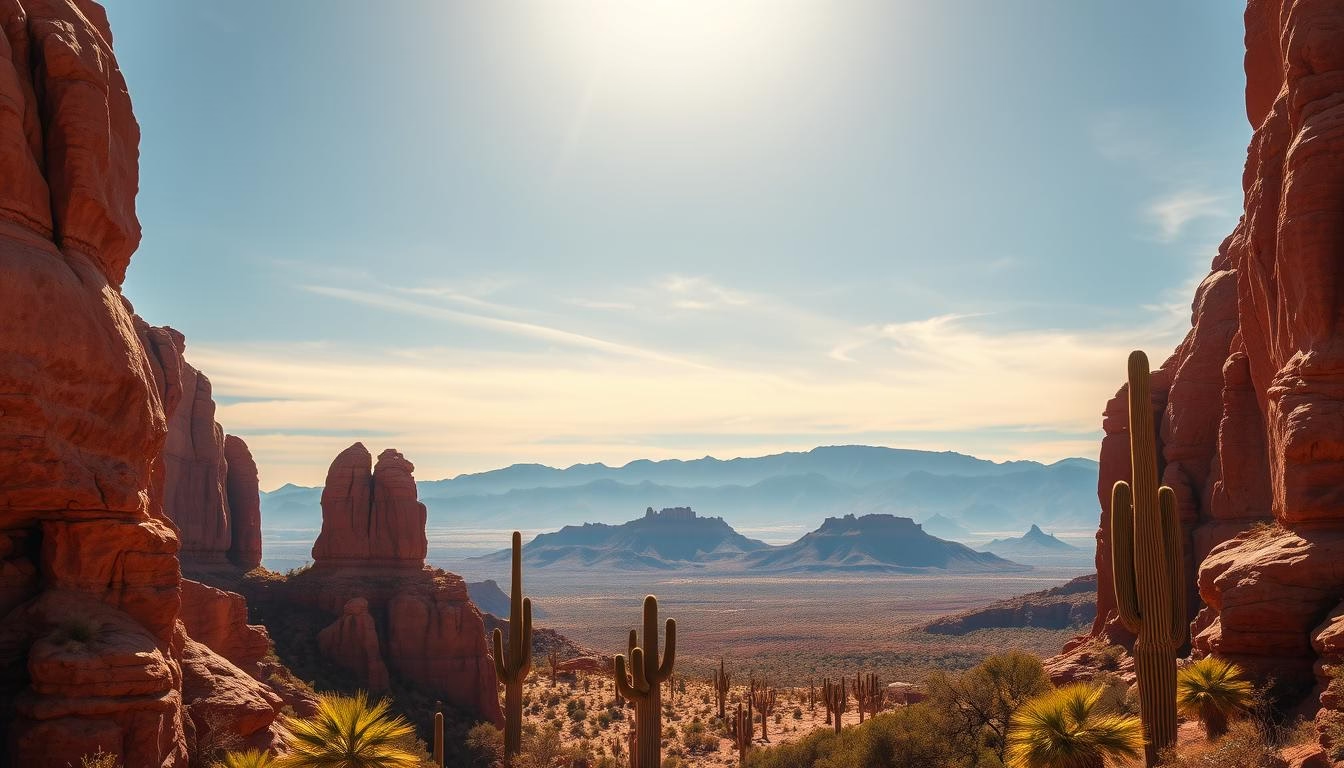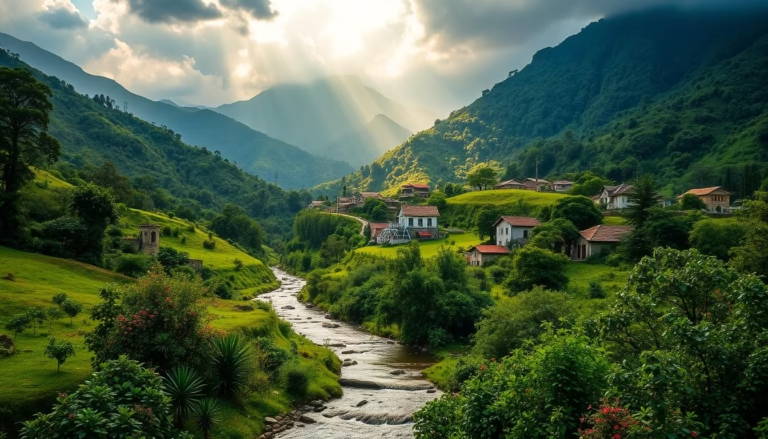Discover Top Tourist Attractions in Arizona
Welcome to the ultimate guide for exploring America’s most diverse southwest gem. Known for its vast desert panoramas and crimson-hued rock formations, this state offers more than just postcard views. As the sixth-largest U.S. state, it hosts 22 protected national parks and monuments alongside engineering marvels like Lake Mead. The crown jewel? A Natural Wonder of the World that draws millions annually.
From the otherworldly curves of slot canyons to the spiritual energy of Sedona’s vortex sites, every corner tells a story. Urban explorers thrive in Phoenix’s artsy districts, while history buffs uncover ancient cliff dwellings etched into sandstone. Families love the mix of kid-friendly trails and interactive museums showcasing Indigenous heritage.
Outdoor enthusiasts find paradise here year-round. Hike through saguaro forests, bike along red-rock ridges, or ski down a dormant volcano’s slopes. With over 300 sunny days annually, the climate invites endless adventures. For a curated list of must-see destinations, we’ve highlighted spots that blend natural grandeur with modern comforts.
Key Takeaways
- Home to 22 national parks/monuments and two massive man-made lakes
- Features the Grand Canyon, a globally recognized natural wonder
- Offers diverse activities from hiking to cultural heritage tours
- Combines metropolitan energy (Phoenix/Scottsdale) with serene towns
- Showcases ancient Native American sites alongside modern resorts
Overview of Arizona’s Unique Landscapes
The sixth-largest state packs geological wonders into every mile. Its 22 national parks and monuments span 113,000 square miles, where saguaros stand guard over desert valleys and the Colorado River sculpts crimson cliffs. Elevation shifts here aren’t gradual – you’ll find ski slopes on the San Francisco Peaks just hours from palm-lined oasis towns.

This state’s elevation rollercoaster creates microclimates that surprise first-time visitors. Near Yuma, temperatures simmer at 70 feet above sea level. Drive north, and you’ll reach 12,600-foot peaks dusted with snow. “Arizona’s landscapes are Earth’s history book,” notes geologist Dr. Elena Marquez. “The Grand Canyon alone reveals 2 billion years of planetary changes.”
| Region | Elevation Range | Signature Feature |
|---|---|---|
| Sonoran Desert | 70-4,000 ft | Saguaro forests & wildflower blooms |
| Colorado Plateau | 4,500-8,000 ft | Antelope Canyon slot formations |
| San Francisco Peaks | 7,000-12,633 ft | Alpine tundra & volcanic remnants |
Road trips here reveal nature’s contradictions. One moment you’re navigating Antelope Canyon’s sunlit corridors, the next you’re tracing ancient lava flows near Flagstaff. These contrasts make every trip through the state’s varied terrain an exploration of planetary evolution.
tourist attractions in arizona
Arizona’s magic lies in its ability to blend raw geological power with profound cultural narratives. Visitors don’t just see landscapes here—they walk through chapters of Earth’s diary and humanity’s enduring spirit.
Natural Wonders and Landmarks
The Grand Canyon needs no introduction, yet its scale still stuns first-time viewers. “It’s like the planet decided to show its bones,” remarks a frequent hiker. For quieter marvels, Saguaro National Park offers forests of spiky sentinels that bloom creamy flowers each spring.
Up north, Antelope Canyon reveals nature’s artistry in sandstone. Sunbeams pierce its narrow halls, painting walls in liquid gold. Local Navajo guides share stories: “These curves took 60 million years to form—we’re just temporary guests.”
Historical and Cultural Sites
At Canyon de Chelly National Monument, ancient cliff dwellings cling to redrock walls. Rangers explain how generations farmed these ledges: “Their handprints remain in the mortar.” Nearby, Tombstone’s dusty streets echo with tales of silver rushes and shootouts.
From petrified forests to Spanish missions, the state protects its layered past. As one historian notes: “Arizona isn’t just rocks and cacti—it’s a living museum of resilience.”
Outdoor Adventures and Hiking Trails
Arizona’s terrain transforms every step into an adventure. With over 800 maintained trails, explorers find routes winding through saguaro groves, red-rock amphitheaters, and pine-scented peaks. The dry climate and varied elevations mean you can chase sunshine in winter or seek cool mountain breezes in summer.
Popular Hiking Routes
Sedona’s Devil’s Bridge Trail rewards hikers with a natural sandstone arch spanning 50 feet. For Instagram-worthy vistas, Cathedral Rock’s 1.2-mile climb reveals 360-degree views. As one trail guide notes: “These routes aren’t just walks—they’re conversations with ancient stone.”
Grand Canyon adventurers tackle the Bright Angel Trail, descending 4,380 feet through geological layers. Rangers advise:
“Bring twice the water you think you’ll need—the canyon writes its own rules.”
Biking and Trail Adventures
Mountain bikers test skills on Phoenix’s Camelback Mountain, where switchbacks lead to city panoramas. Fat-tire enthusiasts cruise Sedona’s slickrock, while families enjoy Flagstaff’s paved Urban Trail System.
| Trail Type | Skill Level | Season |
|---|---|---|
| Desert Single-Track | Intermediate | Oct-Apr |
| Alpine Summit Hikes | Advanced | May-Sep |
| Family-Friendly Paths | Beginner | Year-Round |
From sunrise scrambles up Piestewa Peak to twilight rides through Saguaro National Park, Arizona’s trails promise fresh discoveries. Just remember your boots—and your sense of wonder.
Exploring Iconic National Parks and Monuments
Arizona’s protected lands tell stories older than human history. The state safeguards 22 national parks and monuments, each revealing unique chapters of geological wonder and cultural legacy.
Grand Canyon and Surroundings
At 1,902 square miles, Grand Canyon National Park redefines scale. The Colorado River carved its layered sandstone walls over millennia, creating vistas best seen from the South Rim. Most first-time visitors start at Mather Point—park your car and walk 5 minutes to panoramic views stretching beyond the horizon.
Just $35 grants 7-day access for vehicle groups. Prefer solitude? Arrive at sunrise when golden light paints the canyon’s ridges.
In Tucson, Saguaro National Park splits into two distinct zones. The east district’s Bajada Loop Drive connects challenging hiking trails, while the west boasts dense forests of 40-foot cacti. These spiky giants can outlive most humans—some celebrate 200 birthdays.
Up north, Petrified Forest National Park offers a time capsule. Walk among 225-million-year-old fossils and the planet’s largest petrified wood collection. Rangers joke, “Don’t pocket the rocks—they’re heavier than memories.”
From river-carved chasms to ancient forests turned to stone, these places invite you to walk through Earth’s deepest secrets. Just bring water, curiosity, and sturdy shoes.






